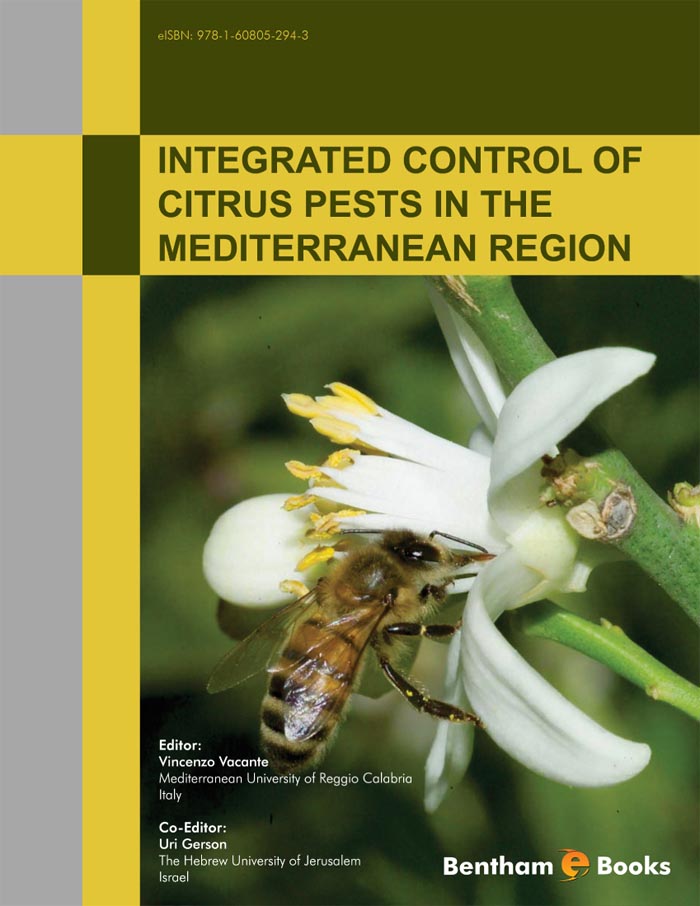Citrus originated from Southeast Asia, whence over the centuries it gradually spread to various regions of the world by human migrations and trade. During the Roman Empire citrus fruits were known in southern Europe, and their consumption began through the Middle Ages in the remaining parts of Europe. In the Mediterranean region citrus has been known for centuries and had intensively influenced human history and customs. This is evident from the part that citrus still plays in the religious rituals of some peoples, in citrus flowers being used as symbols (of purity, etc.), in fruits and leaves being utilized in culinary preparations, and along with other plants (cultivated and wild) being a characterizing element of the Mediterranean landscape. The most important aspect of citrus is its use as a nutrient, either fresh or as juice and/or derivatives, and also in pharmaceutics and/or cosmetics. Directly and/or indirectly, Mediterranean citriculture currently affects about 300 million people and in 2007 the FAO estimated a total harvested area of 8,322,605 ha. Citriculture thus represents an important agricultural sector, characterized by a heterogeneous structure, resulting from various geographical and climatic constraints and the different history of the settlements. This is reflected in several aspects of the industry, such as qualitative and quantitative standards of production, and emphasizes the need for planning a commonly shared modern approach. This becomes critical upon considering plant protection aspects, an area where various technical choices and patterns of behavior are significantly different between the various regions. That is the area in which this e-book strives to contribute, presenting an update of knowledge on the defense against citrus pests in the region, being primarily concerned with promoting the strategy of Integrated Pest Management (IPM). This strategy has been widely implemented in the North American citriculture and is providing economic, ecological and toxicological benefits to individual farms and to the community there. Unfortunately, at present the use of IPM in the Mediterranean region is, at best, either at an initial state, or uncommon, except in some countries like Israel.
This book aims to fill that gap and to address all personnel (college and university students, technicians and traders) who are concerned with citrus in the Mediterranean region, advocating the possibilities of IPM programs by using simple language which is not however devoid of scientific rigor. In order to meet this requirement a strict editorial policy was imposed, based on submitting "essential" information, focusing only on key topics. In addition, we avoided, as much as possible, a "too specialized" approach, which although essential in a strictly entomological context, would have made the text more complex and might have detracted from comprehending the whole discussion. The reader will therefore find in the volume useful information for implementing IPM principles in citriculture, including the use of decision tools and other available practical relevant means, which at this time cannot be found elsewhere. Topics of more specialist interests (e.g. systematics of natural enemies, ecology of populations, etc.), although essential in other contexts, are not required for the purposes the present project.
The table of contents is in two parts, the first discusses the agronomic aspects of citriculture, whereas the second is about the pests. The first chapter of this second part briefly describes the history of citriculture IPM in the Mediterranean region. The second deals with the implementation of IPM, highlighting the objectives of the strategy, its benefits, the decision tools and the relevant methodology used. A subsequent chapter presents basic systematics of the various groups of key pests, including a key for their recognition. The discussion of key pests is developed in 18 chapters, each of which illustrates the fundamental aspects of morphology and bio-ecology (including symptoms of damage), the main limiting natural factors, the endemic and emerging vector-borne Mediterranean citrus diseases and IPM strategies.
The complexity of the topic and the never-ending increases in the published information render our framework highly dynamic; not all available knowledge could thus be included. With that in mind, we extend an invitation to those who will follow us to fill the inevitable many gaps and to correct errors.
Finally, we want to thank Bentham Sciences Publishers for believing in our proposal and in helping make it happen. We also sincerely thank all colleagues who joined our initiative, and provided their contributions to this e-book with a singular spirit of Mediterranean cooperation, which makes it unique.
Vincenzo Vacante
Mediterranean University of Reggio Calabria
Italy
Uri Gerson
The Hebrew University of Jerusalem
Israel

